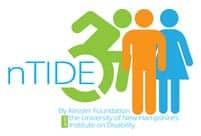Using anabolic-androgenic steroids (AAS) increases the risk of specific types of musculoskeletal injuries, according to an unprecedented survey of retired National Football League players reported in the March issue of the American Journal of Physical Medicine & Rehabilitation.
"Our findings speak to the compounded medical problems that appear with steroid use, with negative effects on joint health starting a ‘snowball effect’ that can lead to other chronic diseases later in life," says senior author Kevin Guskiewicz, PhD, ATC, professor of exercise and sport science and research director at The Center for the Study of Retired Athletes at the University of North Carolina at Chapel Hill. The lead author was Scott Horn, DO, of the Department of Physical Medicine and Rehabilitation in the UNC School of Medicine.
A confidential survey was sent to all 3,683 living members of the NFL Retired Players Association. The retired players were asked about a wide range of health issues, including specific types of musculoskeletal injuries during their NFL careers. A section on substance abuse included a question about the use of "performance-enhancing steroids." Responses were received from 2,552 players—average age 54 years and average playing career 6.6 years.
Overall, 9.1% of the players said they had used AAS. Those who played positions requiring the greatest size and strength had the highest rates of steroid use: 16.3% for offensive linemen and 14.8% for defensive linemen. Among players who played primarily during the 1980s, 20.3% reported using AAS.
Players who used AAS reported more injuries affecting the joint ligaments and cartilage—almost literally from head to toe. Steroid users had higher rates of neck "stinger" or "burner" injuries; herniated spinal disks; elbow injuries; injuries to the knee ligaments and menisci; and injuries of the ankle, foot, and toes.
There was no steroid-related increase in the risk of injuries to the muscle itself, such as biceps or triceps ruptures, and no increase in shoulder injuries. Somewhat surprisingly, AAS use was not associated with an increased risk of tendon injuries. Based on previous studies, the researchers had suspected that tendons might be at increased risk because they could not match the rapid increase in muscle size and strength.
Steroid users also had an increased risk of osteoarthritis, depression, and increased alcohol use later in life. In general, they were less able to maintain physically active lifestyles after retirement. The report found that players who used AAS actually had lower rates of diseases such as diabetes and cancer. However, there were only limited cases and they may reflect the fact that most of the players who used steroids have yet to reach old age, rather than any true decrease among steroid users.
The effects of AAS in increasing muscle size and strength are well known. Amid concerns about the risk of serious health effects, there is little or no data on how steroids affect the risk of musculoskeletal injuries. The NFL began enforcing its ban on AAS use by players in 1989. The athletes in the new survey were asked about their use of steroids "when it was acceptable."
The results lend new insights into the risks of musculoskeletal injury associated with AAS use. The injury patterns suggest that joint ligaments and cartilage may not adapt to steroid-induced muscle changes. It may be that ligaments and cartilage, rather than tendons, are the "weakest link in the chain" leading to injury, according to Horn and colleagues.
The negative effect on joint health may be only the start of the adverse health effects of steroid use, Guskiewicz says. "I call it a snowball effect, with joint injuries contributing to the gradual development of other medical problems, such as osteoarthritis, physical inactivity, depression, obesity, and diabetes," he says.
While it provides important new information on the health risks associated with steroids in a large group of retired professional athletes, the study has some key limitations, such as a lack of data on the dose, type, and length of time steroids were used. "More data are needed to further examine the relationship between AAS use and musculoskeletal injury," the researchers write.
The American Journal of Physical Medicine & Rehabilitation focuses on the practice, research, and educational aspects of physical medicine and rehabilitation. Monthly issues help keep physiatrists up to date on the optimal functional restoration of patients with disabilities, physical treatment of neuromuscular impairments, the development of new rehabilitative technologies, and the use of electrodiagnostic studies. The journal publishes basic and clinical research, clinical case reports, and in-depth topical reviews of interest to rehabilitation professionals. The American Journal of Physical Medicine & Rehabilitation is the official scholarly publication of the Association of Academic Physiatrists.




